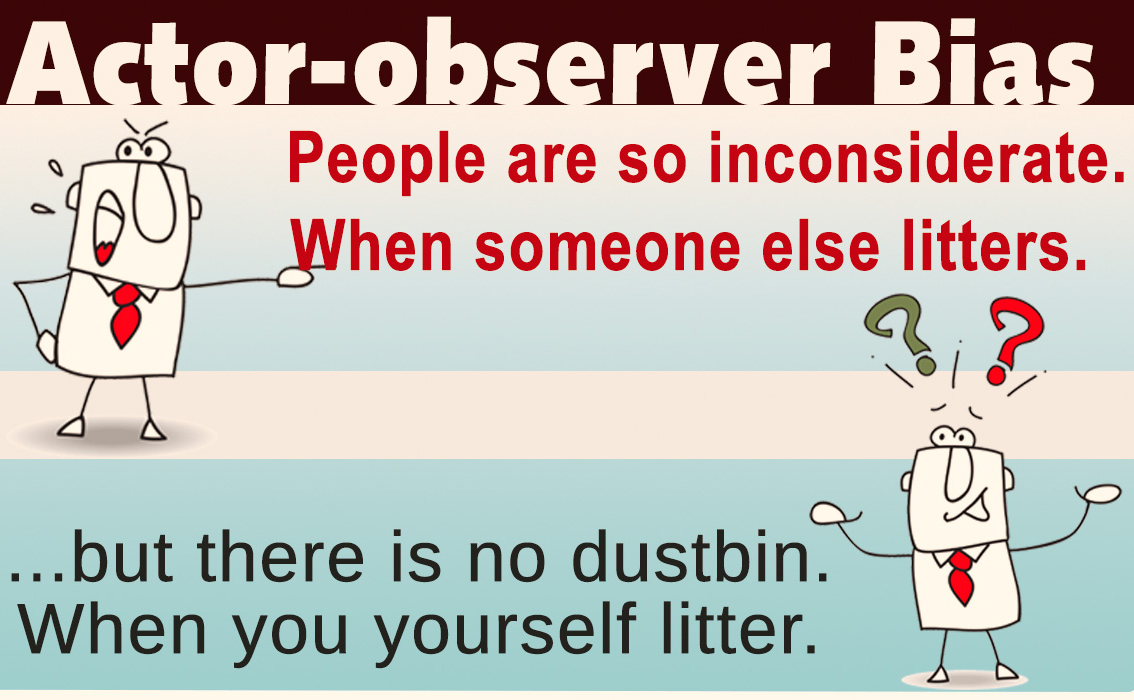The actor-observer bias is a cognitive bias that involves individuals attributing their own behaviors or actions to external, situational factors, while attributing the behaviors of others to their internal dispositions or personality traits. In other words, when we explain our actions, we often focus on external circumstances, while when we explain the actions of others, we tend to emphasize their personal characteristics.
Explanations:
The actor-observer bias is closely related to the concept of perspective and self-serving biases. When we observe our own actions, we have more knowledge of the external context, making it easier to attribute our actions to situational factors. When we observe others, we lack this internal perspective and may focus on personality traits to explain their behavior.
Examples:
Late for a Meeting: If you arrive late for a meeting, you might attribute it to traffic or an unexpected delay. However, if someone else is late, you may assume it’s because they are disorganized or don’t value your time.
Misunderstanding a Message: If you misunderstand a message, you might blame the sender for not being clear. If someone else misunderstands your message, you might assume they are not paying attention or are slow to grasp concepts.
Conflict Resolution: When you have a conflict with someone, you may see their behavior as evidence of their personality flaws. However, when you act in a similar situation, you might focus on the specific circumstances that led to your actions.
Solutions:
Reflect on Perspective: When evaluating your actions and those of others, try to consider the perspective and context in which the actions occurred.
Empathize: Practice empathy by considering the challenges and pressures others face, which may influence their behavior. Realize that people have their reasons.
Communication: Engage in open and empathetic communication to gain a deeper understanding of others’ motivations and thought processes.
Consider Attribution Errors: Recognize that the actor-observer bias is one of many attribution errors, such as the fundamental attribution error. Understanding these biases can help you make more accurate judgments.
Addressing the actor-observer bias requires conscious effort to consider the external and internal factors influencing behavior, whether it’s your own or that of others. This can lead to more fair and empathetic assessments.
